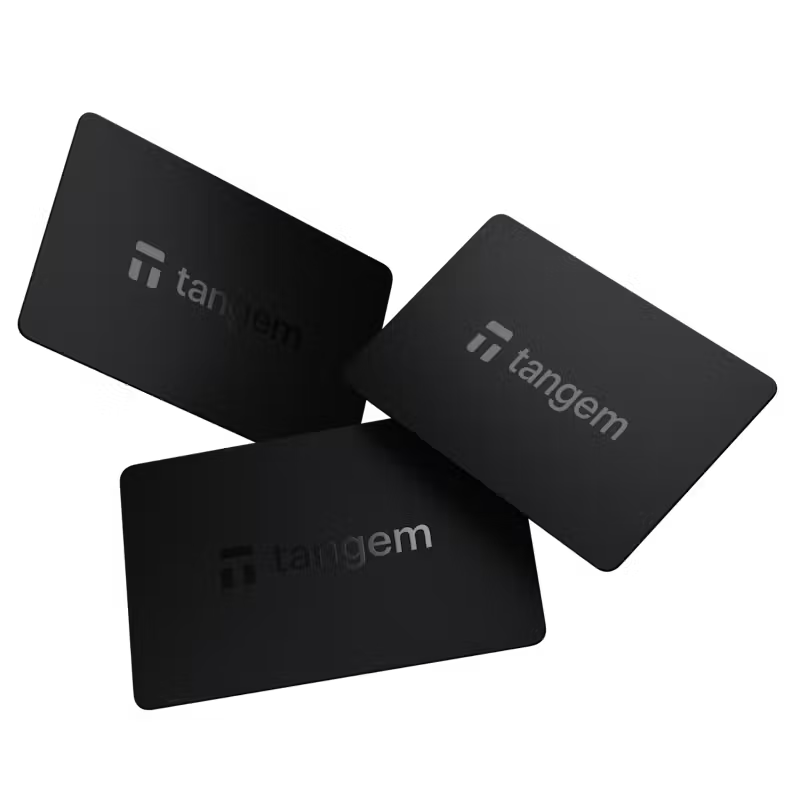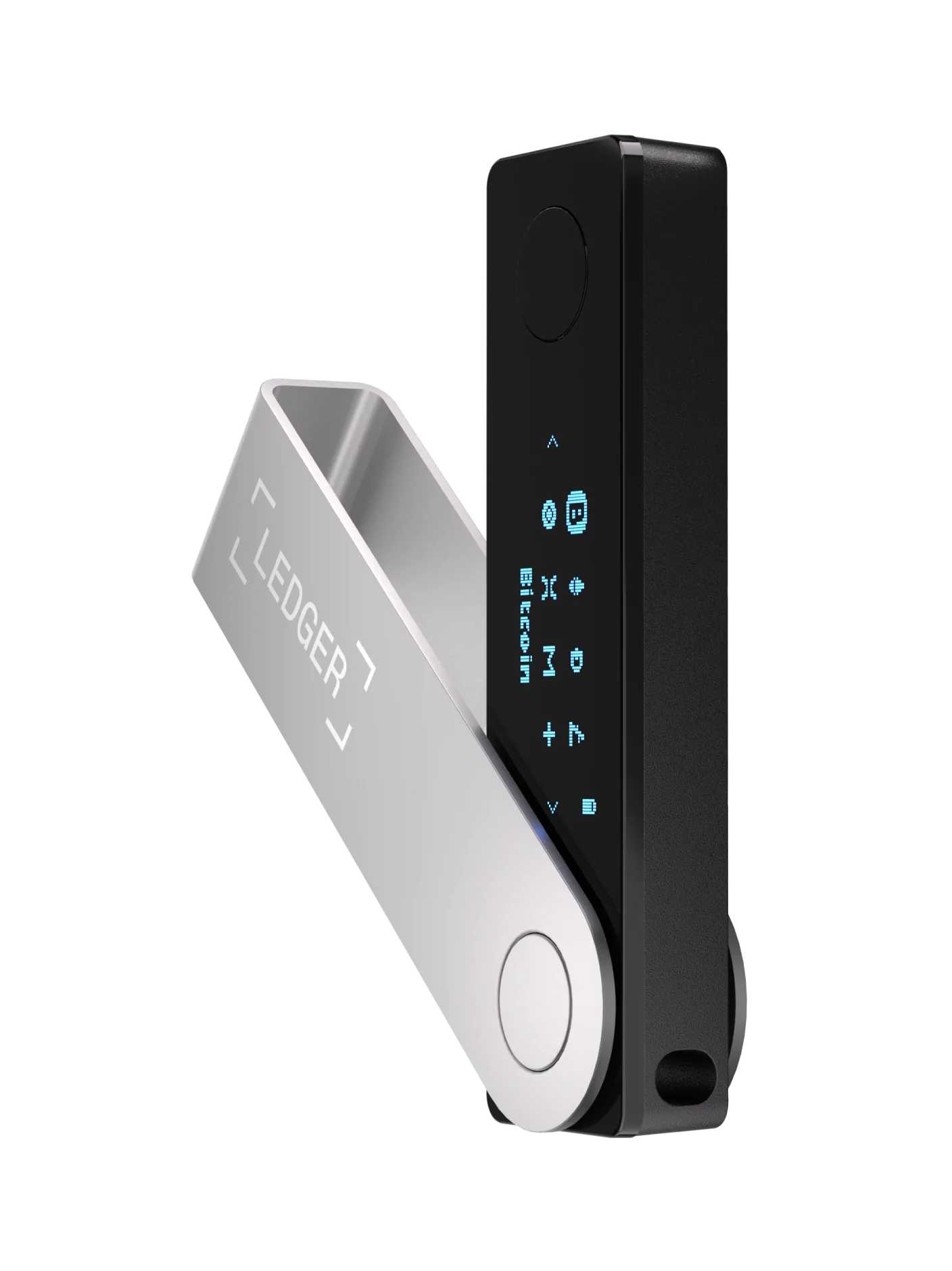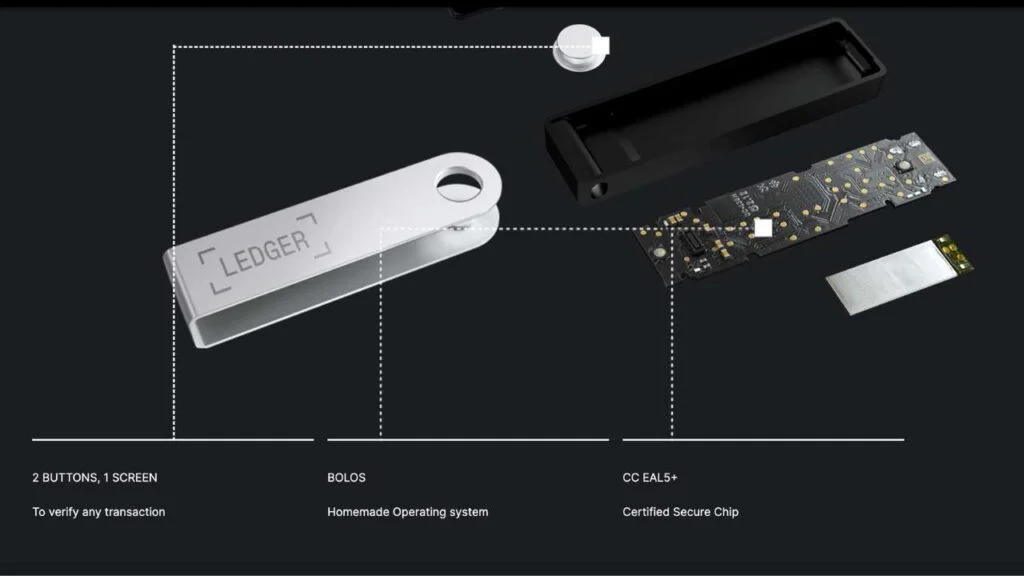Which Crypto Cold Wallet Is Better?

Quick Verdict (What I recommend): Tangem wallet is best for daily transactions, but Ledger is top-rated and tested for advanced users and long-term storage. So, if you want a day-to-day cold wallet, Tangem does the job, but for long-term crypto storage and advanced DeFi access, Ledger is always recommended, without any doubt. Also, if you want a Tangem-type seed backup, Ledger’s recent launch of “Recovery Key” fills the hole.
Look, both Ledger and Tangem use high-grade Secure Elements to protect your keys. That means they are both incredibly hard to hack physically. The real choice, I guess, comes down to which type of risk management you prefer: Tangem’s passive safety, where the design forces simplicity, or Ledger’s active safety, where you trust an established, vetted software ecosystem.
Here is my in-depth Tangem vs Ledger crypto wallet comparison…
Key Takeaways: Difference Between Tangem and Ledger Hardware Wallets
- Build: Tangem is a durable, battery-free credit card that only requires an NFC tap to sign transactions, whereas the Ledger Nano X is basically a USB-style stick offering both a USB-C cable and convenient Bluetooth connectivity.
- Device Compatibility: Ledger wallets work with all operating systems, like Android, iOS, MacOS, Linux, and Windows, whereas Tangem only works with NFC-enabled phones and does not offer desktop support.
- Security Method: Tangem uses a keyless NFC card system with EAL6+ certified chips, while Ledger relies on seed phrases and Secure Element chips (EAL5+) for private key protection.
- Ease of Use: Tangem works instantly with smartphones via NFC, no cables or apps to install, while Ledger wallet requires using its companion app (Ledger Live) through USB-C or Bluetooth.
- Backup & Recovery: Tangem eliminates recovery seeds by letting you create multiple backup cards, whereas Ledger depends on a traditional, tested 24-word recovery phrase.
- Supported Assets: Tangem supports 16,000+ cryptocurrencies and NFTs, whereas Ledger supports around 15,000+ assets but with deeper integration into DeFi, staking, and Web3 dApps.
- Price & Audience: Tangem offers a budget-friendly 2-card pack under $55, ideal for beginners, while Ledger’s Nano X and Stax models cost $149–$279, designed for power users who need advanced features.
Tangem vs Ledger Wallet: Comparison
Let’s start with an overview. Tangem wallet uses a seedless, credit-card-sized design that you tap on your phone to sign transactions. Ledger makes USB-style hardware wallets with built-in screens and physical buttons. The table below sums up key points:
| Feature | Tangem Wallet | Ledger Wallet (Nano X as reference) |
|---|---|---|
| Form factor | Credit-card or ring; no screen or battery | USB stick with a small screen and buttons |
| Security chip | EAL6+ certified secure element | EAL5+ secure element (Nano X); EAL6+ on newer Flex and Stax |
| Backup method | 2–3 backup cards; seed phrases optional | 12/24-word seed phrase; optional Ledger Recovery Key |
| Connectivity | NFC only; requires smartphone (no desktop) | USB-C and Bluetooth; works with phones or desktops |
| Supported coins & chains | 16,000+ tokens across 85+ blockchains | 15,000+ tokens across ~100 blockchains |
| NFT management | Limited; the app doesn’t display NFTs well | Full NFT support through Ledger Live app |
| Mobile/Desktop support | Mobile only (iOS/Android) | Mobile and desktop via Ledger Live |
| Price (2025) | ~$55 for 2-card set; ~$70 for 3-card set | ~$59 for Nano S Plus; ~$149 for Nano X |
| Open source | App open-source; firmware closed with independent audits | Firmware closed; Ledger Live software closed |
| Units sold | 4M+ units | 10M+ units |
Tangem Cold Wallet: Keyless Credit Card Type Wallet

Tangem wallet looks like a credit card and works without batteries. All you need to do is tap it on your phone’s NFC area to sign transactions. I really like the physical simplicity; there are no cables or connectors to worry about.
- Seedless by default: Private key generated inside an EAL6+ chip; no 12-word phrase needed unless you choose optional mode.
- Backup cards: It comes with 2 or 3 identical cards; any one restore your wallet if one is lost.
- EAL6+ security chip: Same rating as chips used in biometric passports; resists tampering.
- Durability: Waterproof, dustproof, and rated for 25+ years of use.
- Wide asset support: Over 16,000 cryptocurrencies across 85+ blockchains, including BTC, ETH, SOL, ADA, and more.
- Open-source app: App is open-source and audited; firmware is closed to prevent tampering.
The Tangem wallet setup is straightforward: download the Tangem app, scan a card, create a backup, and set an access code. There are no tiny screens or buttons. Because it depends on your phone, you need an NFC-enabled smartphone and must trust your phone’s screen when verifying transaction details.
Read my full Tangem wallet review…
Ledger Wallet: Most Popular Crypto Hardware Wallet (10M+ Units Sold)

Ledger wallets have dominated the hardware wallet market for almost a decade. By 2025, the company will have sold more than 10 million devices, securing around 20% of the world’s crypto value. Ledger offers several models, but the Nano X is the flagship for everyday users.
- Secure chip & OS: Tamper-resistant secure element (EAL5+ or higher) and proprietary OS keep keys isolated.
- Built-in screen & buttons: Let you confirm details directly on the device.
- Seed phrase backup: Uses a 24-word phrase; optional Ledger Recover splits it among custodians.
- Connectivity options: USB-C and Bluetooth support for phones and desktops.
- Supports 5,500+ assets: Works with ~30 blockchains and up to 100 apps.
- Rich ecosystem: Ledger Live enables staking, swaps, NFT management, and more.
Read my full Ledger Wallet review…
Tangem Wallet vs Ledger Nano X: Which is Safer? Security Compared
You know, the biggest risk in crypto is often you – the user. Not the hardware itself. Most crypto gets stolen because people make a mistake: they take a picture of their seed phrase, they type it into a computer, or they lose the physical paper copy. Tangem completely solves this by not giving you a seed phrase in the first place, forcing you to use their physically secure multi-card backup system.
Tangem’s secure element is certified at EAL6+, which is an incredibly high level of security used in applications like military cyber defense. The Ledger Nano X uses a chip certified at EAL5+. Generally, both EAL5+ and EAL6+ are considered high-grade certifications and pass rigorous penetration tests.

Going past EAL5+ usually doesn’t provide much higher assurance against common attacks anyway. Basically, that technical difference in the chip rating is minimal for real-world use.
- When we look at physical vulnerability, Tangem totally wins on sheer durability because of its IP69 rating. This means it can survive being dropped in water or stepped on far better than the Ledger Nano X.
- Ledger has that small, separate screen where you must verify the recipient address and amount before signing the transaction. This is a huge security feature because it prevents “display tampering.” Tangem relies entirely on your phone screen for verification.
The security difference is less about the technical chip rating (EAL5+ vs EAL6+) and much more about the architectural choice: hardware security (Ledger’s dedicated screen) versus software and process security (Tangem’s seedless design and Blockaid protection).

Ledger’s philosophy is that the user must never trust the connected computer or phone display, which is why the physical, trusted screen is absolutely non-negotiable for transaction verification.
Tangem, however, addresses the signing risk differently by integrating Blockaid technology. This third-party service actually simulates the transaction before you sign it, flagging potential scams.
Tangem Security
- Highly secure Samsung S3D232A chipset, which has earned the EAL6+ certification.
- Eliminates seed phrases by default.
- Uses three identical cards for redundancy.
- Firmware is unchangeable (reduces supply-chain risk).
- Audited by Kudelski Security and Riscure.
- Optional seed-phrase mode for compatibility with BIP39 wallets.
Tangem has integrated with a service called Blockaid, which is really forward-thinking. Blockaid basically “dry-runs” or simulates your transaction before you sign it. If you accidentally try to connect to a known fraudulent decentralized app (dApp), the wallet can give you a clear, human-readable warning about potential fraud or if the smart contract is trying to drain your funds.
Main drawback: reliance on your phone’s display for transaction verification.
Ledger Security
The “Trusted Display” is a key Ledger advantage that I can’t stress enough. The small screen on the Nano X shows you the transaction details – the recipient address and the amount. You must press the physical buttons on the device to approve the transaction.
Well, this crucial step ensures that even if your connected computer or phone is completely overrun by malware, the malware cannot trick the Ledger device or approve a transaction without your physical confirmation.
- Of course, Ledger still relies on the traditional 24-word recovery phrase (the BIP39 standard) as the ultimate master backup. Ledger attempts to modernize this backup process with an optional, paid service called Ledger Recover.
This subscription service costs $9.99 per month. It’s a way for users who are scared of losing their paper phrase to have an extra digital backup. It basically segments your seed phrase into three encrypted parts, called “shards,” and stores them with trusted third-party providers (like Coincover).
Ledger security measures:
- Multi-layered protection: secure chip, OS, PIN, and secure screen.
- The device screen shows all details before approval.
- Optional Ledger Recover service for seed backup.
- Regular firmware updates add features and patch risks.
Side-by-Side Comparison
| Security Aspect | Tangem | Ledger Nano X / Stax |
|---|---|---|
| Secure element rating | EAL6+ | EAL5+ (Nano X); EAL6+ (Stax) |
| Seed phrase requirement | Optional; seedless by default | Mandatory 12/24 words |
| Backup mechanism | Two or three identical cards | One seed phrase |
| Screen | None; relies on phone | Built-in screen |
| Connectivity | NFC only | USB-C & Bluetooth |
| Firmware updates | None | Periodic via Ledger Live |
| Audits | External audits (2018, 2023) | Internal & external audits |
| Hack record | No device hacks | No device hacks; 2020 email data leak |
Tangem vs Ledger: Supported Coins, Blockchains, NFTs, etc.
Tangem supports over 16,000 cryptocurrencies and counting, across more than 85 blockchain networks. Ledger also supports a massive range of popular coins, like Bitcoin, Ethereum, Solana, and Cardano. They officially list support for over 15,000 different tokens.
Both wallets generally handle NFTs well, especially those on major chains like Ethereum and Polygon. Ledger handles NFT management directly within the integrated Ledger Live app, which is neat and tidy. Tangem supports NFT storage and management via its WalletConnect integration with popular marketplaces, allowing you to sign transactions using the card.
Verdict: Tangem and Ledger support a similar number of digital assets, but Ledger provides better official management tools.
Ledger vs Tangem Wallet: Ease of Use
- Set up and everyday use: Tangem is fast. You just need to scan the card on your phone, set an access code, and you’re done. Sending or receiving crypto is as simple as tapping the card when prompted. There’s no need to install separate apps for each coin. That said, you’ll always need your phone, so if your phone is dead, you can’t transact. Ledger devices require more steps. You unbox the device, set a PIN, write down your 24‑word phrase, then install apps for each coin through Ledger Live. The process takes 15–20 minutes. Daily use means unlocking the device, navigating with buttons, and confirming on the tiny screen. It’s slower but gives you an additional layer of verification.
- Learning curve: Beginners often find Tangem less intimidating because there’s no seed phrase and no multi‑app management. Ledger’s combination of device + Ledger Live app can feel complex at first. You might need to uninstall and reinstall apps if you use more than 100 types of coins.
- Portability and durability: Tangem’s credit‑card shape fits in a wallet and weighs almost nothing. It doesn’t need to be charged. Ledger devices are small USB sticks but have batteries (Nano X) or require being plugged in. Tangem cards are IP68 rated for water and dust, Ledger devices are durable but not waterproof.
For more wallets, read my guides on the best cold storage wallets and best crypto hardware wallets.
Tangem Cards vs Ledger Recovery Key: Seed Backup Options
How you recover your wallet after loss or damage is crucial. Here’s how the two options differ:
- Tangem backup cards: When you set up Tangem, you receive two or three identical cards. Any two cards can restore the wallet if one is lost. There’s no single piece of paper that holds your seed. The downside is that if cards are stolen together, the thief could reset your PIN. Also, you can optionally generate a traditional seed phrase inside the app, but it won’t be fully air‑gapped.
- Ledger seed phrases: Ledger uses a standard 24‑word recovery phrase. Store it in multiple physical locations, ideally using metal plates or seed phrase storage tools. Without it, you can’t recover your wallet. Ledger’s new Recovery Key is also available for $39.99, which is exactly similar to Tangem Cards.
- Security vs convenience: Tangem’s multi‑card approach is convenient and avoids writing down words, but physical security becomes more important. Ledger’s seed phrase is universal and lets you restore to other wallets (e.g., Trezor, ELLIPAL, Keystone).
Ledger Wallet vs Tangem: Price and Value
Tangem is genuinely affordable. The safer 2-card set usually costs around $54.90, and the 3-card set, which offers the best redundancy, is about $69.90.
Ledger products are priced higher, which makes sense because they include a screen, a battery, and more advanced hardware features. The Nano S Plus, which is their budget modern model, starts at $59. The popular Nano X, with its Bluetooth and battery, usually costs around $149.
| Model | Standard Price Range | Key Features |
| Tangem Wallet (2 Cards) | $54.90 | Basic set, highly portable, seedless backup, EAL6+ chip |
| Tangem Wallet (3 Cards) | $69.90 | Safest redundancy, best long-term value |
| Ledger Nano S Plus | $59 | Large screen, USB-C, better app capacity than the original Nano S |
| Ledger Nano X | $149 | Flagship device, Bluetooth, battery, mobile iOS/Android support |
| Ledger Recover Service | $9.99 per month (Optional) | Cloud-based seed phrase sharding and recovery |
| Ledger Recovery Key | $39.99 | Card-based backup (similar to Tangem wallet cards) |
Value for money: Tangem gives you basic cold storage at a low cost. Ledger costs more but offers a color screen, richer software ecosystem, and Bluetooth connectivity. Whether the extra cost is worth it depends on your needs. For small portfolios, Tangem might be enough. For high‑value holdings or heavy DeFi usage, the extra features of Ledger could justify the price.
Read full reviews:
Ledger vs Tangem: Which Should You Choose?
You should buy a Ledger wallet, especially the Nano X, if you are an experienced crypto user who needs deep DeFi integration and values a verified transaction screen above all else.
If you are an active trader, consistently staking, swapping, and dealing with decentralized finance (DeFi), the Ledger Live application and its ecosystem are generally more powerful and mature.
So, people who need Bluetooth connectivity for convenience or who truly prefer the old-school physical buttons and the trusted, separate display screen for transaction verification should absolutely stick with Ledger. That trusted screen is the ultimate protection against PC or smartphone malware.
You should totally choose a Tangem wallet if you are a beginner, prioritize simplicity, or just want the most durable, easy-to-use, and affordable cold storage solution.
Also, if you manage your crypto mainly on your smartphone and hate dealing with cables, charging, or complicated Bluetooth setups, the NFC tap-to-sign experience is basically perfect for you
Who Should Buy a Ledger Crypto Wallet?
If you’re wondering whether Ledger suits you, here are some indicators. You might want a Ledger if you:
- Hold large or diverse portfolios and need to manage multiple coins across different blockchains.
- Plan to stake, swap, or interact with DeFi and NFTs directly from the wallet’s app. Ledger Live integrates these features.
- Want the reassurance of screen verification. Being able to check addresses and amounts on the device itself reduces risk.
- Don’t mind paying extra for a robust ecosystem, and are comfortable managing a seed phrase.
- Prefer desktop compatibility and the option to use your wallet without a smartphone.
Who Should Buy a Tangem Cold Storage Wallet?
Tangem might be the better choice for you if you:
- You are a beginner or casual investor who feels intimidated by seed phrases and complicated setups.
- Value portability and simplicity. The card fits in your wallet and doesn’t need charging or cables.
- Have a limited budget and want an affordable way to secure your crypto.
- Own an NFC‑enabled smartphone and are happy to manage everything from your phone.
- Want to support a seedless backup model where no single phrase can be stolen, and you’re willing to protect multiple cards.
FAQs about Tangem vs Ledger
Is Tangem better than Ledger Nano X?
Tangem is better for simplicity and cost, while Ledger Nano X is better for features and flexibility. Tangem cards are cheaper and easier to set up, but they rely on a phone and lack a screen.
Ledger Nano X provides a built‑in screen, works with desktop and mobile, and has deeper DeFi integration. So the “better” choice depends on what you value most: convenience and price (Tangem) or advanced functionality (Ledger).
Should I choose Tangem or Ledger for long-term storage?
For long‑term storage, many people prefer Ledger because of its robust security model, screen verification, and well‑established reputation. The seed phrase backup also lets you recover your wallet years from now on another device.
Is Tangem the safest Ledger wallet alternative?
Tangem is one of the safer seedless alternatives. Its EAL6+ chip, unmodifiable firmware, and open‑source app have been audited. Tangem removes the single point of failure of a seed phrase, but it introduces the risk of losing two cards.
Other secure Ledger alternatives include ELLIPAL Titan and Trezor Safe 5, which also use air‑gapped or multisig setups. Safety isn’t just about the device; your backup strategy and buying from trusted sellers are critical.
Which is more secure for beginners, Ledger or Tangem?
Tangem is significantly more secure for beginners because its simplified, seedless recovery method removes the highest probability of user error. It is just human nature to make mistakes when handling complex 24-word passwords.
Since beginners are the most likely group to write their seed phrase down in a slightly insecure place or lose it, Tangem’s multi-card backup system makes the initial hurdle of secure crypto ownership much easier to clear. By the way, the fact that you just tap to sign also makes daily use simpler and less prone to mistakes
Ledger Nano S Plus vs Tangem – how do they compare?
The Ledger Nano S Plus ($59) is Ledger’s budget option, but Tangem ($54.90 for 2 cards) still wins on price, mobile flexibility, and overall durability.
The Nano S Plus is a fantastic, stripped-down Ledger device. It has a great screen and USB-C connectivity, but it does not include Bluetooth for truly seamless mobile use, especially for iPhone users. Tangem is cheaper and offers instant, easy NFC access to any modern smartphone
Where should I buy the Tangem Wallet and Ledger devices?
You should always buy directly from the official manufacturer websites or authorized resellers. Both Tangem and Ledger warn against buying on marketplace sites because counterfeit devices exist.
Which is better for DeFi and Staking?
Ledger, through its Ledger Live app, currently provides a more integrated and comprehensive environment for deep DeFi and staking interactions.
Ledger Live has been developed for years and allows you to manage many staking and DeFi protocols directly within its vetted platform. Tangem supports staking and swapping, but you usually have to use WalletConnect to interface with external dApps.
Can I use both Tangem and Ledger together?
Yes, you can use multiple hardware wallets. Many experienced users split their holdings across devices for redundancy. For example, you could keep everyday spending and travel funds on Tangem cards for convenience and store long‑term holdings on a Ledger for extra security and DeFi features.





